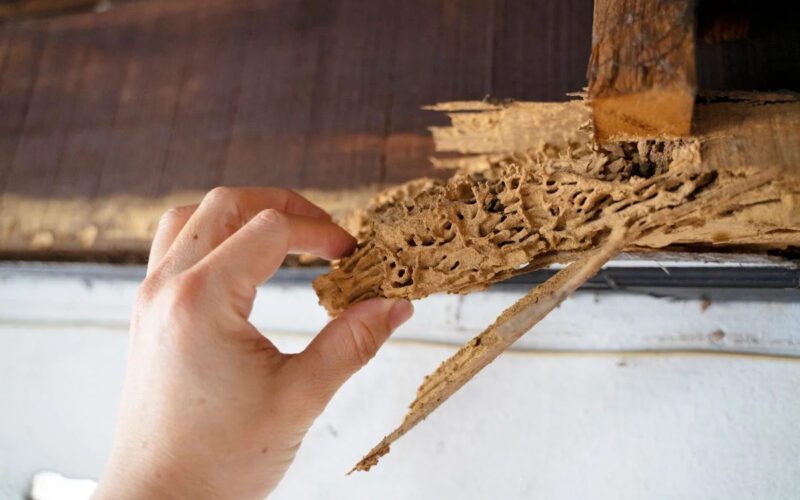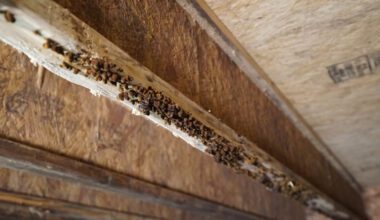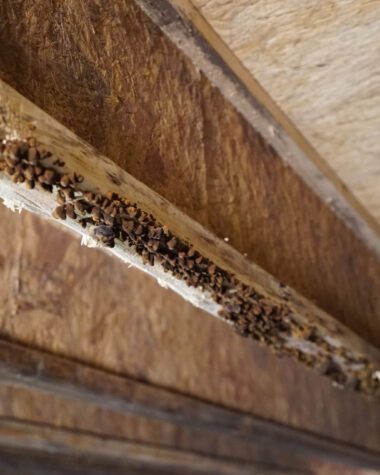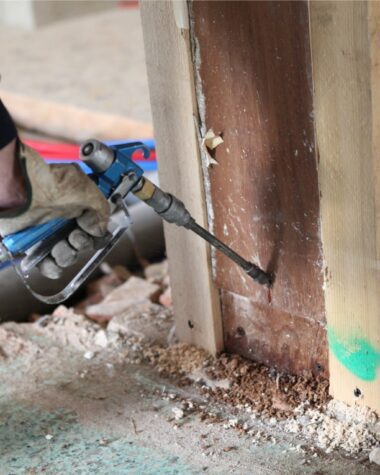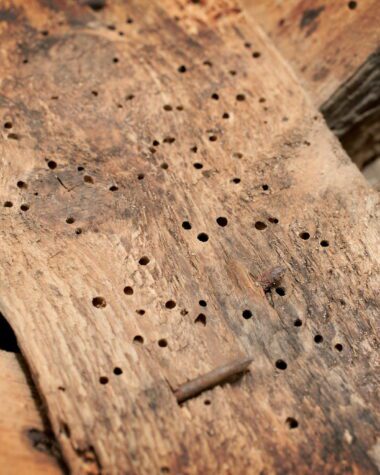Every year billions of dollars are spent on wood infestation. According to Orkin Pest Control, US residents spend $5 billion yearly on pest damage and repair. Most homeowners in America spend $3,000 on pest control and prevention.
It seriously threatens public and private property and the agricultural industry. The damage can last long, and some are unrepairable. Wood infestation is a major problem for homeowners caused by wood-destroying insects such as termites, carpenter ants, wood-boring beetles, and other insects.
In order to combat the threat of wood infestation, it is important to understand its cause and effects. Here, we listed some of the most frequently asked questions about wood infestation. Let’s take a look to know more about prevention methods and solutions.
What is Wood Infestation?
Wood infestation is the damage caused by wood pests such as termites, wood-boring bugs, ants, woodworm, and beetles. Their infestation can result in severe damage and destruction to any property. These cellulose-loving insects are a headache to property owners, destroying any wooden structure and furniture.
Wood-destroying insects need moisture to survive. They are attracted to damp and humid areas with poor sunlight. Their damage is usually undetected until your property starts to fall apart.
What is the Cause of Wood Infestation?
Since insects lost some of their natural habitats due to deforestation, they attacked our wooden structure to build their colonies. They build their nest in our gardens, backyards, and the inside of our homes. Their damage is severe and is not easy to repair.
Termites are the most common pests that can wreak havoc on your house. They are tiny and like to hide underground, in darker rooms, and behind walls. Without being detected, they can destroy the whole wall or wooden post.
Most insects are drawn to moisture. Leaky roofs and drainage problems are some of the factors that can build up moisture that attracts termites. Wood insects can eat your wood non-stop every single day, and without proper treatment, it can cause unprecedented damage.
What are the Signs of Wood Infestation?
There are different signs of infestation from a specific pest. Some create tiny holes, while others create mud tunnels to collect food. But whatever the sign is, they have the same goal, to eat and establish their colonies in wood.
Termites
For termites, some of the most common signs are mud tubes, hollow sounds, discarded wings, and dust-like wooden residue. Termite colonies are underground; they penetrate your home by going through cracks and wooden structures attached to the ground.
Wood-Boring Insects/Woodworms
Wood-boring beetles lay their eggs in cracks and crevices on wood. When their larvae get hatched, they create tunnels to make their way into the wood, eating all the cellulose until they are ready to leave and find a mate. The larvae measure 6mm in length ang have a rigid body.
They live in wood with enough moisture content in order to survive. Moisture makes the wood soft and helps them to stay dehydrated. Woodworms can be prevented by applying permethrin, a pesticide used to kill them.
Carpenter Ants
Carpenter Ants build their nest by excavating wood and creating passageways. Just like termites, they prefer wet wood, and they enter through cracks and holes in the wood. They don’t necessarily eat wood; moreover, they use it to build their colony.
The excavation weakened the wood, which caused destruction. The wood becomes hollow and cannot handle the weight. As a result, your wooden structure will fall apart, resulting in a massive repair.
Related Post: Do Ants Eat Wood?
How to Prevent a Wood Infestation
Preventing wood infestation can be simple, depending on the type of damage. If you notice an infestation in an early stage, it can be treated with a simple pesticide or a DIY method. But if the damage is severe, then you need the help of an expert.
There are commercial and non-commercial methods to prevent wood infestation. Also, an infestation can be prevented by properly checking your property for any possible signs of infestation. Fix all cracks and leaks, apply a wood sealant to outdoor furniture and remove discarded logs in your surroundings.
What are the Effective Methods in Eliminating Wood Infestation?
There are two effective methods to eliminate wood infestation. You can choose between a professional treatment or a do-it-yourself treatment. Both are helpful, but which is more effective? Let’s break it down to see which has the best result.
Professional Treatment
If budget is not an issue, professional treatment is the best solution. Professional treatment involves using formulated chemical solutions to kill pests quickly. Termiticide is designed to kill termites, while permethrin is formulated to kill woodworm and beetles. Chemical treatment has a long-lasting protective effect.
DIY Treatment
If you’re looking for a cost-friendly treatment, a do-it-yourself hack is an ideal choice. DIY methods utilize natural remedies and over-the-counter pesticides to treat wood pests. The effectiveness is only guaranteed for a short time.
Both methods are useful, but for long-lasting protection, professional treatment is the best choice. Most pesticides are used by professional pest control experts to disinfect wood and to protect against re-infestation. It can last for years and is vital to the survival of your property.
Conclusion
Who would have thought that small critters could cause thousands of dollars in destruction? They’re harmful to humans, but they are responsible for causing problems for homeowners. To stop the spread of wood infestation, there are methods and guides on how to eliminate them.
Wood infestation is a serious problem, and luckily there are solutions to solve them. You can opt to use commercial and natural remedies to eradicate pests. If the damage is huge, then a professional expert is what you need.
Enough knowledge is sufficient to keep your home pests-free. Additionally, there are creative ways to reuse your infested wood after you eliminate the pests. You can turn your infected wood into another piece of furniture.
